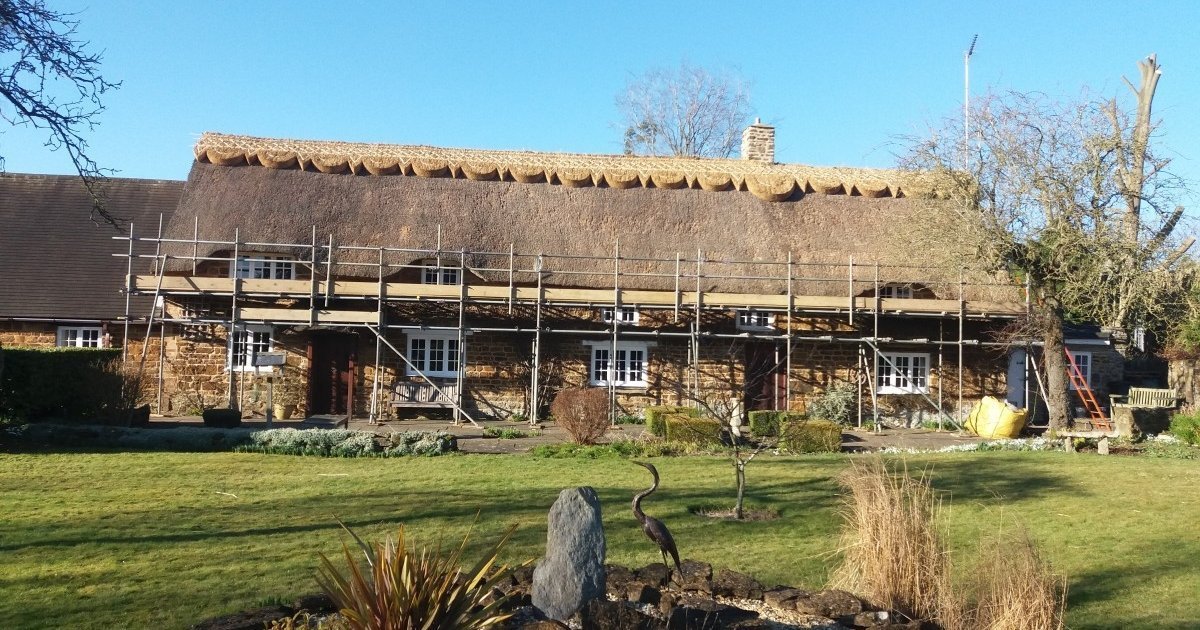WHEN SHOULD I GET MY ROOF RE-COATED?
Depending on which type of reed is used, depends on when you would need it re coating. Every thatched house will require a re-ridging around every 12-15 years. If your house has been thatched with long straw it is advised you would re-coat every 20-25 years, wheat reed every 25-30 years and water reed every 50-60 years. But this is just an estimate and factors such as; quality of previous work and quality of materials may need to be considered. If you are un-sure, just arrange a free inspection with us.
WILL I NEED ANY REPAIR WORK?
To maintain the longevity of your thatched roof, you may require patching work to be carried out on the thatch. You may also require cement fillets or lead work repaired or replaced if it has slipped or cracked. It is also important, to observe if your thatch is being affected by the wildlife. As this may lead to the need for repairs, if an animal has decided to make your roof its new home! These are all essential maintenance requirements to ensure you stay warm and dry so its always good to keep an eye on any areas showing signs of wear.
HOW LONG WILL THE RE-THATCH TAKE?
The timescale for completion of thatching a roof will always vary, as there are many factors to consider, including; the size of roof, style, features, previous condition such as timber structure, and the weather. But for a standard cottage 6-8 weeks is the average for a re-coat and 2-3 weeks for re-ridge.
WHY DOES MY THATCH LOOK THICKER THAN OTHERS?
There are two main reasons for this; firstly, is the type of reed used. Water reed is generally applied straight to the rafters of the roof, giving it a thinner appearance. Whereas wheat reed and long straw are generally applied to the existing coat. The second reason is when applying wheat reed and long straw, the existing coat should be stripped to a basecoat of around 8-10 inches. If this is not done, your thatch will appear thicker. Multiple thatch layers will increase the weight bearing on the roof structures, which can cause stress and damage.
CAN I CHANGE THE REED THAT IS USED OR THE STYLE OF MY THATCH?
When a roof is re-thatched, we will always replace like for like. For example, if the property is thatched using wheat reed and has a flush ridge, you will replace in wheat reed and do a flush ridge. If you do wish to change the type of reed or style of thatch, you will have to apply for planning permission with your local county council.
WHAT IS THE OBBMTA AND NSMT?
The Oxfordshire, Berkshire & Buckinghamshire Master Thatcher’s Association (OBBMTA) and the National Society of Master Thatcher’s (NSMT), are associations dedicated to thatched houses and the thatching industry. They have been created to give you advice and a better piece of mind when choosing a thatcher. Every thatcher that is part of an association will have had their work assessed, to make sure it is at a good standard before they are accepted. I would recommend that you should choose someone that is part of a thatching association, or society when choosing your thatcher.
HOW MUCH WILL IT COST?
It all depends on the size, complexity and requirements of the roof. But we are more than happy to come and complete a free inspection, to assess the roof and provide you with a quotation.
WHERE DOES THE REED COME FROM?
Olde England Roofs uses reed from a reed supplier based in Chard. The reed that is supplied to us, is grown on their farm and delivered to us.

